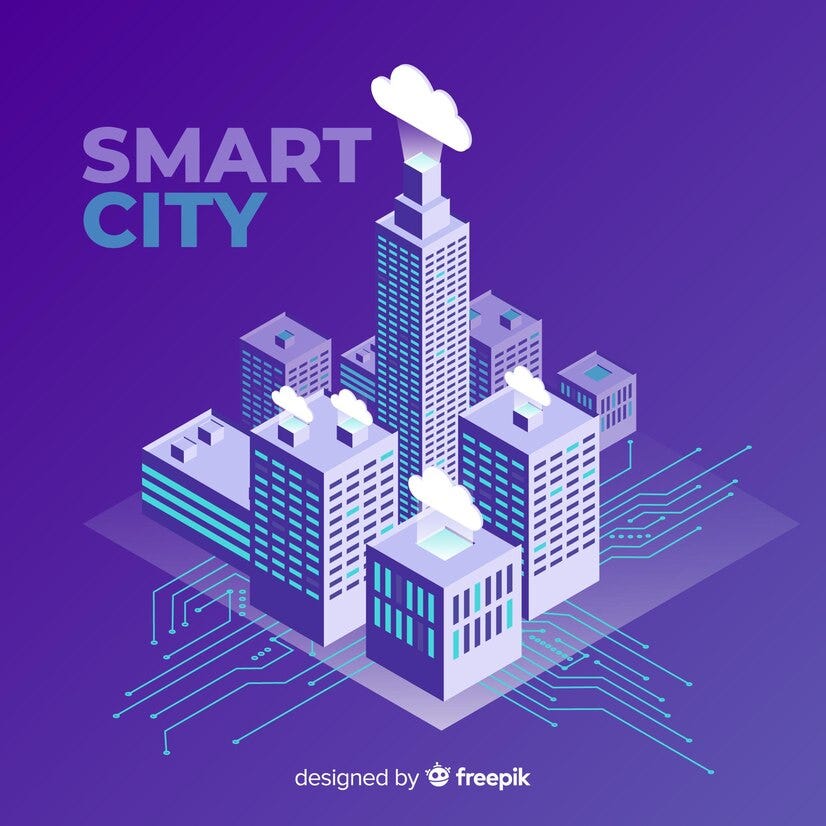
Picture this: a city that's alive. Not in a creepy sci-fi way, but in a "holy cow, did the traffic lights just read my mind?" kind of way. We're talking about smart cities, and they're not just some distant concept. They're emerging all over the world, and they're truly transforming urban living.
Here's the situation: by 2050, an estimated 68% of the global population will be city dwellers. That's a significant increase in urban density. But here's where it gets interesting. Cities aren't just expanding vertically and horizontally. They're becoming smarter, more efficient, and more responsive to citizens' needs.
We're not just applying superficial technological solutions to longstanding problems. Smart cities are taking a comprehensive approach to tackling complex urban challenges. How? By integrating cutting-edge technologies like artificial intelligence, Internet of Things sensors, and sophisticated data analytics to create more efficient and livable urban environments.
From Singapore's public transport that makes you feel like you're living in the future, to Barcelona keeping tabs on its environment like a helicopter parent, these smart cities are showcasing that technology can significantly enhance quality of life. It's about more than just convenience; it's about creating sustainable, efficient urban spaces.
But this isn't just about having advanced technology on every street corner. We're talking about a fundamental reimagining of urban infrastructure. Envision a city where every component, from streetlights to waste management systems, is part of an interconnected, intelligent network. This network works in harmony to improve daily life, enhance environmental quality, and potentially even contribute to overall well-being.
Indeed, smart cities are addressing major global challenges - climate change, population growth, resource management. They're approaching these issues with innovative solutions that offer hope for a more sustainable future. It's an exciting development in urban planning and technology. Welcome to the future of cities - it's looking promising and, well, smart!
A Short History
The concept of smart cities has a fascinating history that dates back to the 1960s and 1970s. During this time, Los Angeles was pioneering urban data analysis through its Community Analysis Bureau, laying the groundwork for future innovations in urban planning. In the 1980s, Singapore established its National Computer Board, which further set the stage for what would eventually become a global movement. The term "smart city" itself began to gain traction in the mid-1990s, notably with Amsterdam launching its virtual 'digital city' in 1994. This marked an early recognition of the potential for technology to transform urban life.
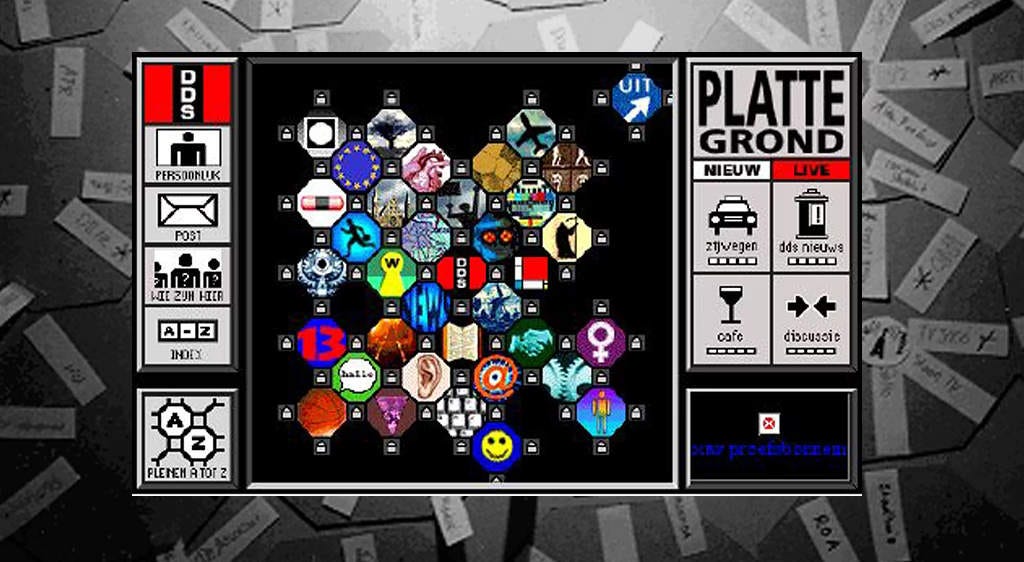
However, it was between 2005 and 2008 that the concept truly gained momentum. Tech giants like IBM and Cisco popularized the term "Smart City," initiating projects aimed at enhancing urban efficiency through information systems. This era is often referred to as Smart City 1.0, characterized by a focus on implementing technology without fully grasping its broader implications.
As we moved into the early 2010s, Smart City 2.0 emerged, with city leaders taking a more active role in determining how to deploy smart technologies effectively. This shift was highlighted by the inaugural Smart City Expo World Congress in Barcelona in 2011, which brought together stakeholders from around the globe to discuss innovative urban solutions.
The evolution continued with Smart City 3.0, which emphasized citizen co-creation and social inclusion. This phase recognized that technology should serve not just as a tool for efficiency but also as a means to enhance community engagement and equity. Today, smart cities are defined by their use of information and communication technologies (ICT) and Internet of Things (IoT) sensors to improve operational efficiency and public services, as exemplified by initiatives like India’s "Smart Cities Mission," launched in 2015.
Recently, we've seen the introduction of the Smart City 4.0, which shifts focus toward industrial and business digital transformation. According to a European Commission program, these cities are integrating advanced IoT sensor technology, car-sharing systems, and citizen connectivity platforms. Real-time information sharing via mobile apps is becoming standard practice, allowing residents to stay informed about local events and community issues. This new approach encourages participation through various channels—whether it’s through mobile devices or traditional media—making it easier for citizens to engage with their city.
Three essential elements that define a smart city:
Connectivity: Devices must be internet-connected to exchange information.
Data: Connected devices must generate and exchange data.
Government involvement: Public sector application is crucial to differentiate smart cities from general IoT implementations.
Real-World Examples
Smart cities are not just concepts; many cities worldwide have implemented smart city initiatives:
Singapore: A Pioneer in Smart City Development
Singapore has firmly established itself as a global leader in smart city initiatives, with its Smart Nation program, launched in 2014, serving as a cornerstone of its urban development strategy. This initiative reflects the city-state's commitment to leveraging technology to enhance the quality of life for its residents.
So, what exactly has Singapore been doing in the realm of smart cities?
For starters, the country has built a robust digital infrastructure. The Nationwide Broadband Network (NBN) and the Smart Nation Sensor Platform ensure high-speed connectivity and real-time data collection across the island. This foundation allows for seamless communication and data-driven decision-making.
When it comes to mobility, Singapore is tackling traffic congestion head-on. The city-state has implemented an Electronic Road Pricing (ERP) system that adjusts tolls based on real-time traffic conditions. They’re also testing autonomous vehicles, paving the way for smarter transportation options.
Digital governance is another area where Singapore shines. The Smart Nation Platform and Digital Identity system, known as SingPass, streamline access to government services, making it easier for residents to interact with various agencies without the hassle of paperwork.
Sustainability is a priority as well. Initiatives like the Green Mark Scheme encourage environmentally friendly building practices, while smart energy grids help optimize energy use throughout the city.
In healthcare, Singapore is addressing its aging population by digitalizing its healthcare system. This includes offering video consultations and using IoT devices for patient monitoring, making healthcare more accessible and efficient.
Singapore's efforts have not gone unnoticed; in 2018, it received the City Award at the Smart City Expo World Congress in Barcelona. The city consistently ranks high in global smart city indices, especially in areas like mobility, productivity, health, and security.
However, it's important to recognize that Singapore's journey hasn't been without its challenges. The extensive use of sensors and data collection raises privacy concerns for some residents, leading to fears of a "Big Brother" scenario. Additionally, critics argue that the government's strong role in these initiatives may stifle grassroots innovation and creativity.
Environmental concerns also linger. While smart technologies aim to promote sustainability, the energy consumption associated with data centers and digital infrastructure has raised questions about their overall environmental impact.
Looking ahead, Singapore continues to evolve its smart city initiatives. The Punggol Smart Town project aims to showcase how smart technologies can be integrated into everyday life. Moreover, Singapore is focusing on developing artificial intelligence capabilities and fostering public-private partnerships to drive further innovation.
Further reading:
https://www.ierek.com/news/singapore-smart-city-transformation/
Barcelona: A Pioneer in Citizen-Centric Smart City Development
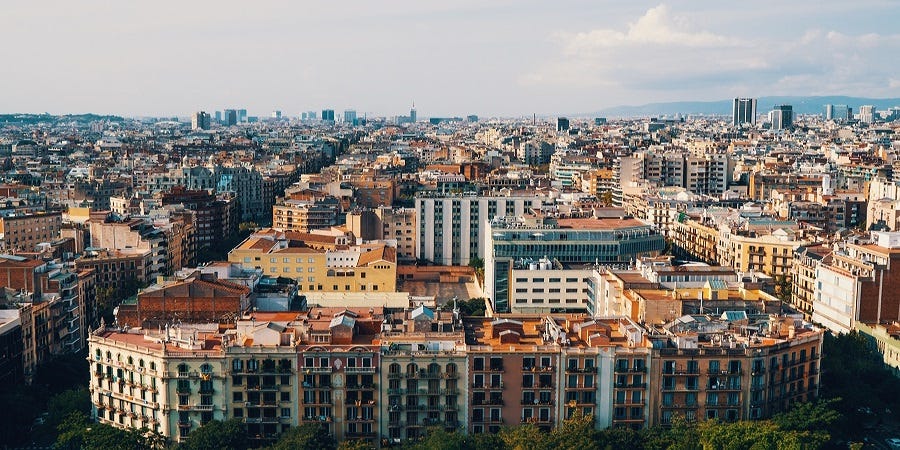
Barcelona has emerged as a global leader in smart city implementation, with its journey beginning in earnest around 2011.
For a few years, the city focused on implementing technology-driven solutions. In this phase, initiatives were criticized for being too technology-driven without sufficient citizen input. Some projects, like electromagnetic parking sensors, faced technical challenges and had to be refined or abandoned.
Under the leadership of Francesca Bria (appointed in 2016), Barcelona is refocusing its strategy to be more citizen-centric, emphasizing social inclusion and equity. Ongoing initiatives include:
Sustainable developments including an Air Quality Improvement Plan and an Urban Mobility Plan.
Affordable Housing: Creating a register of rental and vacant properties to address housing affordability issues.
Open Source and Data Sovereignty: Emphasizing open-source solutions and data sovereignty to ensure citizens' control over their data.
Further reading:
https://www.beesmart.city/en/smart-city-blog/smart-city-portrait-barcelona
https://minnovation.com.au/smart-cities-2/example-of-a-smart-city-a-case-study-into-barcelona/
https://angrynerds.co/blog/the-future-of-internet-of-things-in-smart-cities-barcelona-case-study/
Szczecin, Poland: Making Strides on the Baltic Coast
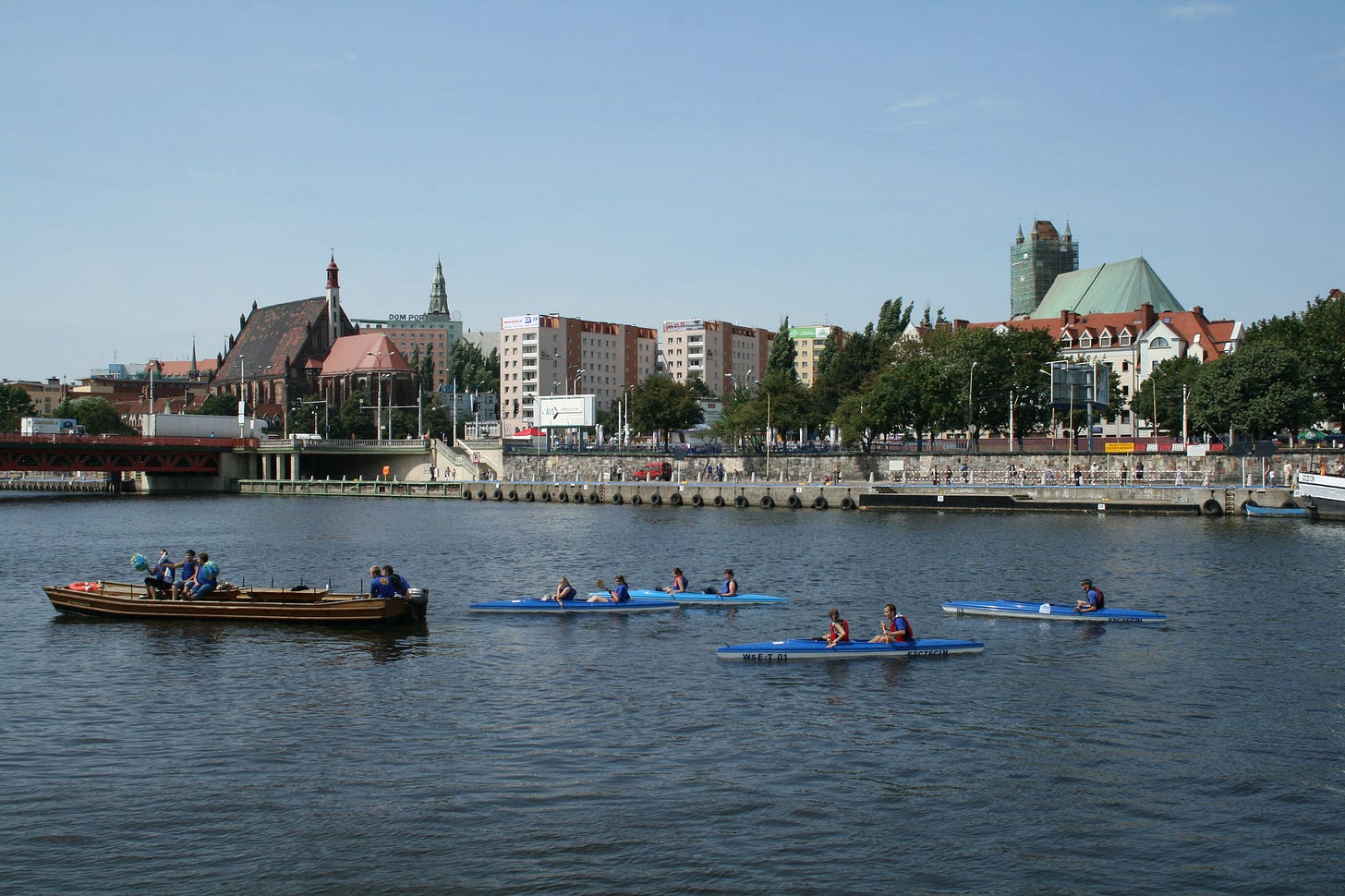
Szczecin, Poland's seventh-largest city, might not be the first name that comes to mind when you think of smart cities, but it's quietly making impressive strides in urban innovation. This Baltic port city is proving that you don't need to be a tech hub to embrace smart solutions effectively.
Let's take a look at what Szczecin's been up to:
In the realm of mobility, Szczecin has been quite busy. They've rolled out an Integrated Transportation System that's making public transport more efficient. They've also jumped on the bike-sharing bandwagon, giving residents a greener way to zip around town. And for those who still prefer four wheels, smart parking solutions are helping to ease the headache of finding a spot.
But Szczecin's really shining when it comes to energy efficiency. They've installed a smart lighting system that's cut electricity use by half and slashed overall costs by a whopping 70%. That's not just good for the city's wallet; it's a win for the environment too.
Speaking of the environment, Szczecin's been giving Mother Nature some love. They've been developing green spaces and implementing smart water management systems. They're also keeping a close eye on air quality, using monitoring systems to help reduce pollution.
On the digital front, Szczecin's making life easier for its citizens with e-services and open data initiatives. This isn't just about convenience; it's about fostering innovation and transparency.
And let's not forget the economy. Szczecin's been nurturing its startup scene and working to boost its competitiveness on the international stage.
All these efforts haven't gone unnoticed. In European smart city rankings, Szczecin's been holding its own, particularly in areas like smart governance, mobility, and environmental initiatives.
But it's not all smooth sailing. Like many cities, Szczecin faces challenges in funding its smart city dreams and getting citizens more involved in the process. And of course, there's always more work to be done on the digital infrastructure front.
Looking ahead, Szczecin's got its sights set on becoming a resilient smart city, ready to tackle whatever environmental and economic challenges come its way. They're aligning their smart city strategy with sustainable development goals and working to foster collaboration between universities, businesses, and the government.
Perhaps most interestingly, Szczecin's tapping into its maritime roots, developing smart solutions for port management. It's a perfect example of how cities can use their unique characteristics to drive innovation.
While Szczecin might not be grabbing headlines like some of its flashier European counterparts, it's a great example of how mid-sized cities can embrace smart technology to improve urban life. It's proof that you don't need to be a global metropolis to be a smart city success story.
Further reading:
https://www.globalyo.com/esim-and-smart-city-initiatives-in-poland/
https://www.beesmart.city/en/smart-city-blog/smart-city-poznan
Nice: A Pioneering Smart City on the French Riviera
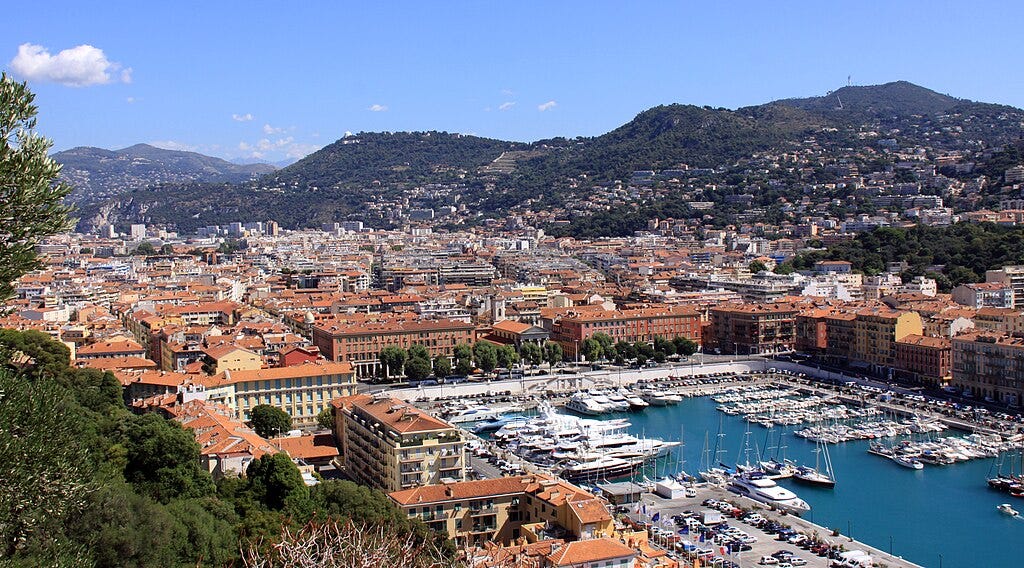
Nice, the vibrant capital of the French Riviera, has emerged as a leading smart city not just in France, but on the global stage. Since 2008, the city has been on a transformative journey, leveraging technology and innovation to enhance the quality of life for its residents and visitors while addressing urban challenges in novel ways.
Nice's smart city initiative gained significant momentum in 2010 when it became the first European city to implement a comprehensive service package based on Near Field Communication (NFC) technology. This early adoption set the tone for Nice's ambitious smart city agenda, which has since expanded to encompass various aspects of urban life, from mobility to environmental sustainability. A year later, Nice's potential as a smart city was recognized internationally when it won IBM's prestigious "Smarter City Challenge." This accolade not only put Nice on the global smart city map but also provided the city with valuable expertise and resources to further its digital transformation.
The city's commitment to innovation is perhaps best exemplified by the creation of the Smart City Innovation Center in 2014. This 300m2 showroom, located within the Mediterranean Institute for Risk, Environment and Sustainable Development (IMREDD), serves as a collaborative platform that brings together research institutions, educational bodies, and leading companies involved in smart city development.
Another initiative is the Urban Environmental Monitoring (UEM) system. Launched alongside the Smart City Innovation Center, this project deployed 3,000 sensors across a 160-hectare area in western Nice. These sensors collect real-time environmental data on air and noise pollution, water and energy consumption, and waste management. This wealth of information enables city officials to make data-driven decisions and develop predictive models for improved urban management.
Nice's smart city strategy focuses on four key areas: risk management, environmental sustainability, intelligent mobility, and energy efficiency. In the realm of mobility, the city has implemented several innovative solutions, including an electric car-sharing service (Auto-bleue), a bike-sharing program (Vélo bleu), and smart parking systems. These initiatives not only reduce traffic congestion and carbon emissions but also provide citizens with flexible and sustainable transportation options.
The city's commitment to environmental sustainability is further demonstrated by its participation in various European smart grid projects. Nice Grid, for instance, was one of the first smart grid demonstrators in France, focusing on integrating renewable energy sources and optimizing energy consumption. The success of such projects has positioned Nice as a leader in smart grid technology and sustainable energy management.
Nice's efforts have not gone unnoticed. In 2015, the city was awarded the French Tech label, recognizing its thriving digital ecosystem and support for tech startups. In 2018, Nice was ranked among the top 15 smart cities worldwide, a testament to its continued innovation and progress in urban digital transformation.
The city's smart initiatives extend beyond technology implementation to include citizen engagement and digital inclusion. Nice has developed various platforms and tools to encourage citizen participation in urban planning and decision-making processes. For instance, the "Volunteer Academy" platform connects citizens with volunteer opportunities based on their interests and availability, fostering a sense of community and civic engagement.
Looking to the future, Nice continues to push the boundaries of what it means to be a smart city. The Eco-Vallée project in the Plaine du Var area serves as a living laboratory for sustainable urban development, incorporating smart grid technologies and eco-friendly design principles on an unprecedented scale.
Further reading:
https://www.investincotedazur.com/en/the-smart-city-innovation-center-opens-in-nice/
Final Thoughts
So, we've taken a whirlwind tour through the world of smart cities, from Singapore's tech paradise to Barcelona's eco-friendly vibes, with pit stops in Szczecin and Nice. And let me tell you, it's been quite a ride!
First things first: smart cities aren't just some fancy buzzword cooked up by tech bros. They're the real deal – a genuine shift in how we're building and running our urban jungles. We're talking about cities that actually work for us, from getting around town without losing your mind in traffic to keeping the lights on without burning through resources like there's no tomorrow.
But it's not all smooth sailing in smart city land. We've got some hurdles to jump, and they're not small ones. Take the whole 'digital divide' thing. It's like we're building this awesome treehouse, but some folks don't have ladders to climb up. We've got to make sure everyone's invited to the party, not just the tech-savvy crowd.
And let's be real, some people are giving side-eye to this whole smart city concept. They're worried we're so busy playing with our shiny new tech toys that we're forgetting about the basics – you know, little things like affordable housing and making sure everyone feels like they belong.
But here's the thing: smart cities are like teenagers. They're growing, learning, and yeah, sometimes making mistakes. But they're also full of potential. The latest smart city ideas are all about putting people first and making sure technology works for everyone, not just the chosen few.
Looking ahead, the future's looking pretty bright (and smart). With AI, 5G, and all sorts of cool gadgets on the horizon, our cities are set to get even cleverer. But remember, the real magic happens when we use all this tech to bring people together, not drive them apart.
At the end of the day, smart cities are about creating places where we all want to live – places that are efficient, green, and actually care about what people need. So here's to the cities of tomorrow – may they be as smart as they are welcoming, as high-tech as they are homey, and as connected as they are caring. The future's calling, folks, and it's got free Wi-Fi!





Excellent survey of Smart Cities. Well researched.